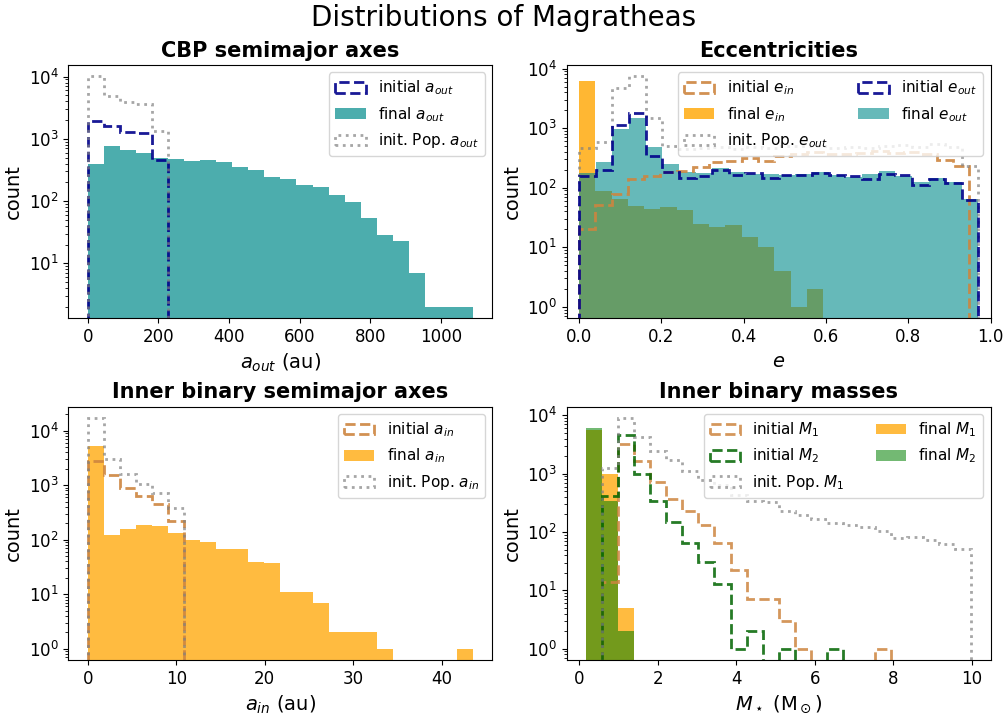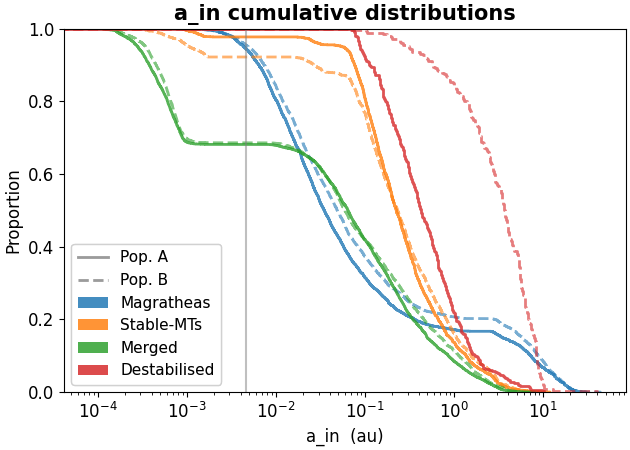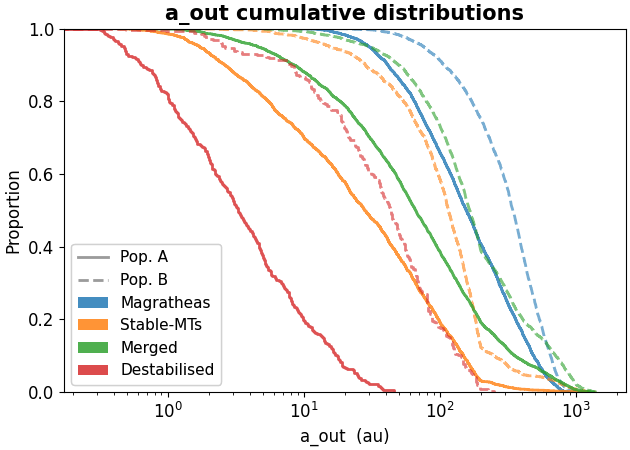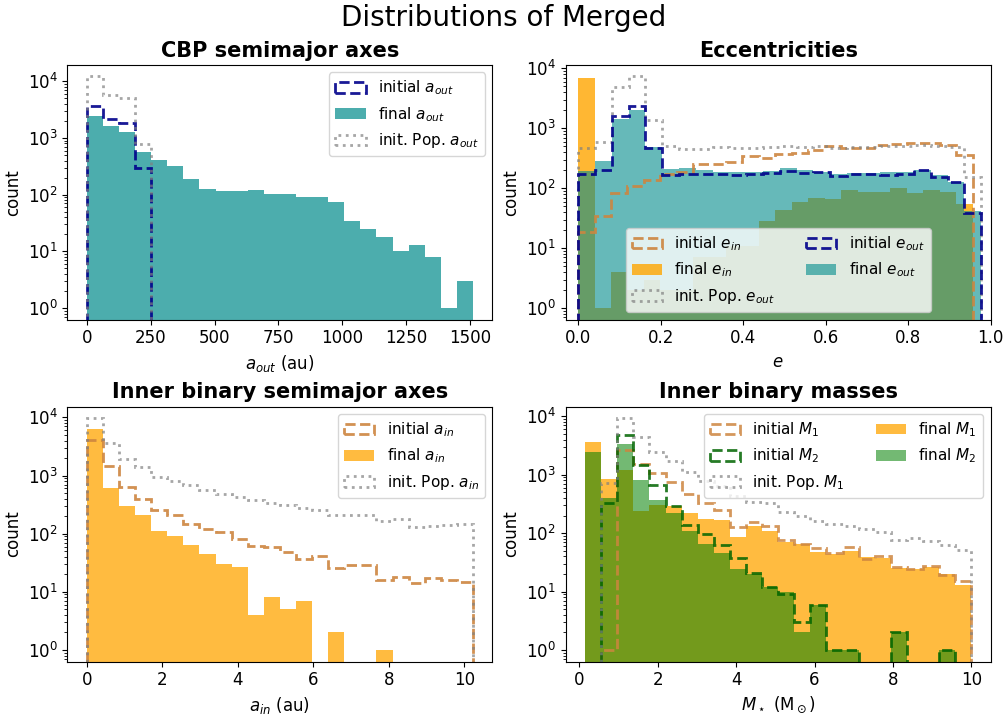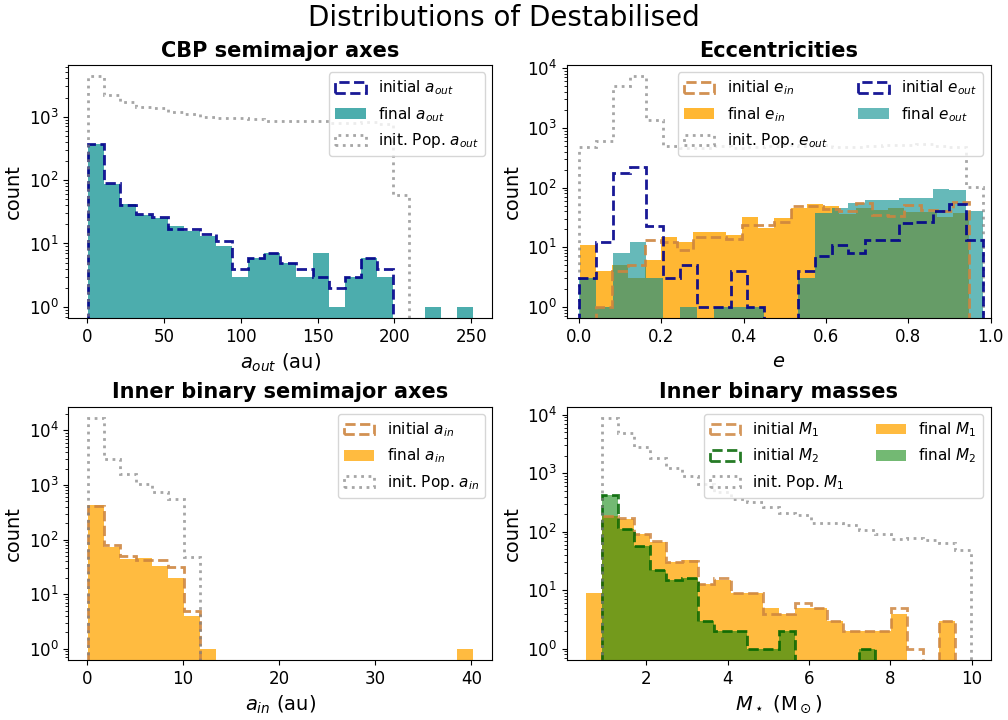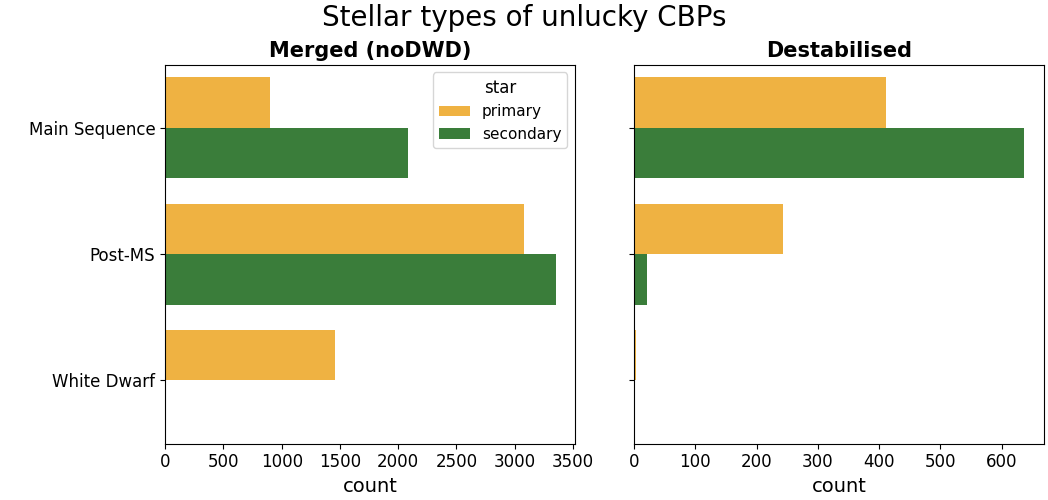The focus of this work is to quantify the survival rate of circumbinary planets (CBPs) in the context of the binary host evolution, from the zero age main sequence (ZAMS) to one Hubble time (i.e. the age of the Universe).
Multiple studies have shown that stars in binary and multiple systems are ubiquitous throughout the Milky Way (Duchêne & Kraus 2013; Tokovinin 2021), but very little is known about exoplanets around evolved binary systems.
Among the ∼45 confirmed circumbinary substellar objects (SSOs) known to date, seven planets orbit one WD star and eight planets have one host that has completed a first giant branch phase.
The evidence of a larger number of planetary systems in evolved binaries than single WDs has been argued not to be a coincidence. A work by Kostov et al. (2016) found that CBPs have more chances of survival when orbiting compact binary systems than single stars of similar mass.
Our work is set within the broader context of study for the development of the planetary detection science case of the LISA mission. This development includes the LISA detection prospects of SSOs orbiting DWDs through Bayesian analysis. Indeed, LISA will be able to detect giant planets through gravitational waves in the entire Milky Way (Tamanini & Danielski 2019, Danielski et al. 2019) and also in the Large Magellanic Cloud (Danielski & Tamanini 2020).


